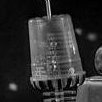Beware the AutoCAD GeoLocation command. If you take a drawing on arbitrary coordinates and use AutoCAD's Pick Location function, picking a point in your drawing, you are setting yourself up for a world of problems, such as never being able to properly merge other data that is correctly georeferenced. Yes, the Bing images may line up, yes the lat/long reported may be approximately correct, but drawings in arbitrary/assumed coordinates will lead to problems including embarrassment if you provide them to surveyors, engineers or GIS professionals.
Others agree, take a look at this Autodesk forum post.

